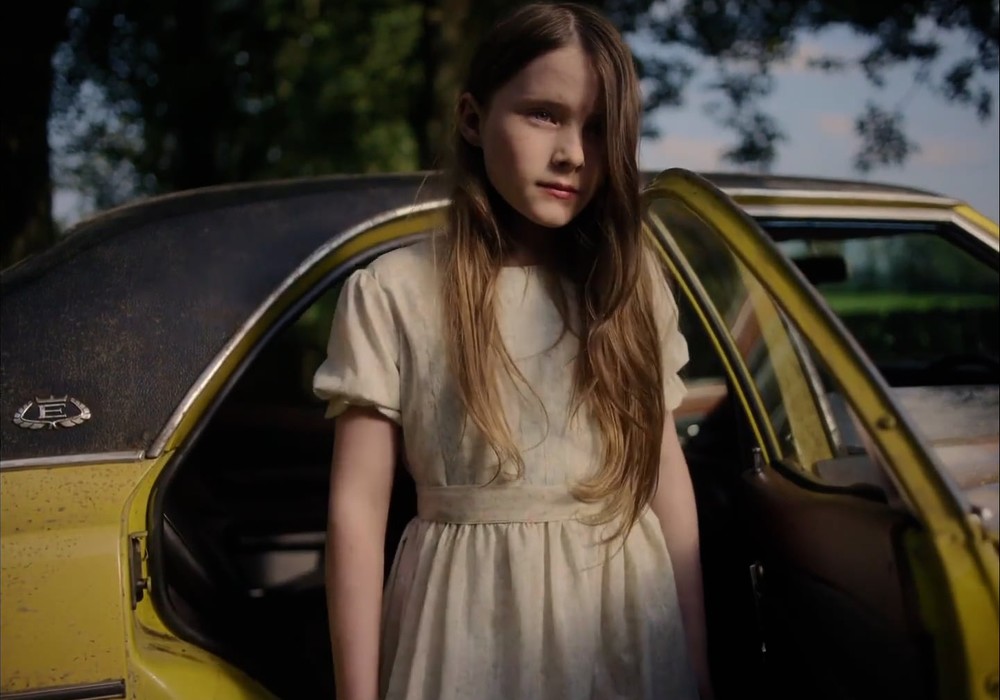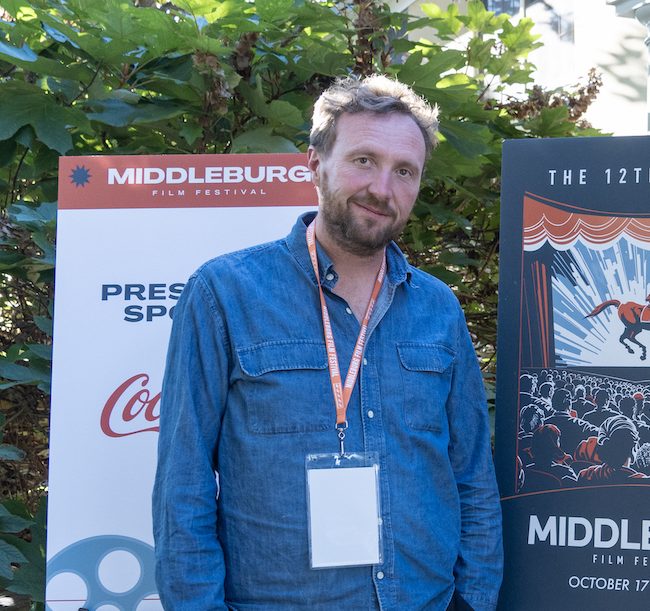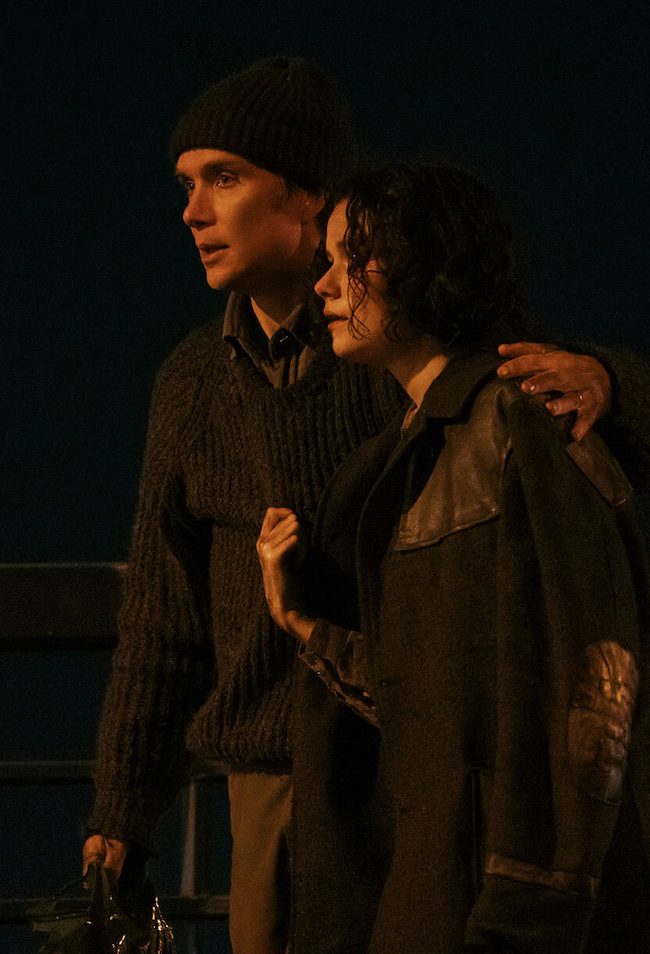
(Check out Ray Lobo’s movie review of The Quiet Girl (An Cailín Ciúin), it’s available now on VOD. Seen it? Join the conversation with HtN on our Letterboxd Page).
As a child I occasionally mused about being raised by different parents than my own. I questioned whether the birth lottery had randomly assigned me the best possible duo to raise me. At a certain point in young adulthood, I arrived at a safe conclusion that my parents were decent human beings and that I had been lucky to have been raised by them. But a nagging doubt has always tugged at that conclusion; namely, how I can judge my parents without having something to compare them against? Perhaps if as a child I had experienced different parents for a few weeks, a few months, a year; then I would have realized that my biological parents were not that great. And that realization may have been too much for a child to psychologically handle.
Director Colm Bairéad’s feature-length debut, The Quiet Girl (An Cailín Ciúin), is set in 1980s rural Ireland. The girl referred to in the film’s title is Cáit (Catherine Clinch). The opening shot shows Cáit’s body sprawled out on a tall grass field. We hear her family calling for her from the house. Immediately we sense that Cáit wants to keep her distance from that house, from her parents, from her siblings. She inhabits the same world as her family but is disconnected from their worldview.
Cait’s mother (Kate Nic Chonaonaigh) is overwhelmed by household chores, by being a mother to Cait’s siblings, and by her ongoing pregnancy. Cait’s father (Michael Patric) halfheartedly fulfills his parental role. Cait’s father sees her and her siblings as burdens, as mouths to feed. His parental duties do not get in the way of his enjoyment. He seems to have a relationship with another woman and even drags Cait to a pub so he can enjoy a pint. Cait is a background figure for her parents, and she knows it. That is why she distances herself and maintains a monk-like quietude. There is no point in expressing yourself if you are just a burden whose opinions and needs are nothing more than an annoyance.
Cait’s parents decide to unload her on extended family for the summer. Eibhlín (Carrie Crowley) and Seán (Andrew Bennett) are a childless couple who labor from sunrise to sunset tending to livestock and household chores. As soon as Cait arrives, Eibhlín notices Cait’s sheepishness, her unkemptness, how her parents have neglected her. Eibhlín rolls up her sleeves and goes to work on Cait. She washes Cait, gives her clean clothes, feeds her, and, most importantly, gives her a sense of dignity. Eibhlín’s parenting style is very different to what Cait is accustomed to. She considers Cait’s preferences and takes them seriously. Seán is slow to warm to Cait, but his affection for her grows quickly. Eibhlín informs Cait that there are “no secrets in this house.” One wonders if that is true. There seems to be something off with Cait’s new parents. Regardless, Cait starts to come out of her shell. This family setup is only temporary; but one cannot help but sense that if Cait were given a choice, she would choose Eibhlín and Seán over her biological parents.
The Quiet Girl is adapted from the Claire Keegan novella, “Foster.” Bairéad does a magnificent job of translating Keegan’s novella from the page to the screen. Bairéad does a brilliant job of taking us into a child’s world wherein objects—whether it is how clouds look through the window of a moving car, or the impression created by an ashtray full of cigarette butts, or the image of the neck of a father figure—tend to somehow stick in memory. Bairéad also brilliantly creates setting via audio. Radios and TVs constantly emit the sounds of shows and advertisements that place us in a pre-internet time and place. It is precisely these sounds that formed the background noise for a lot of us whose childhoods took place before the internet. Bairéad also smartly employs the sound of a cuckoo bird in several scenes (any bird lover will understand the significance of the cuckoo in relation to the The Quiet Girl’s plot). One cannot fail to mention the most salient auditory detail in the creation of setting—the use of Irish Gaelic. Every actor in The Quiet Girl does a magnificent job playing their role. Each actor plays their role with nuance and attention to detail; thus, giving us three-dimensional characters that are far from being caricatures.
The Quiet Girl delivers a soul-stirring ending that in the hands of a lesser director or actors would have been syrupy. The Quiet Girl is far from being syrupy. It is a touching film dealing with the factor that most affects the course of our lives—the parents we are born to and who we do not get to choose. Such is the absurd game of chance that is life.
– Ray Lobo (@RayLobo13)
Stewart Bird, Colm Bairéad; The Quiet Girl movie review












Tom B.
I appreciate your reference to the significance of the call of the cuckoo bird in several scenes. I’ve seen “The Quiet Girl” several times and hadn’t picked up on the idea of Cait being the cuckoo’s egg laid temporarily in the Kinsella’s nest for the summer. It’s easy to write off the father, Dan, as the villain of the story, yet he comes across as a more complex figure than that. He calls Cait “The Wanderer”, but he himself is a bit of a wanderer and seems to want to avoid the family home as much as Cait does. When Cait returns home at the end of the film, he gives his daughter more of a greeting than her mother does. Also, we never see Dan lose his temper with Cait and speak sharply to her in the way that Sean does on two occasions. All in all, it’s a timeless, beautiful film that has been in my thoughts ever since I first saw it here in Kingston, Ontario back in March of this year; and I’ve seen it several times since then.